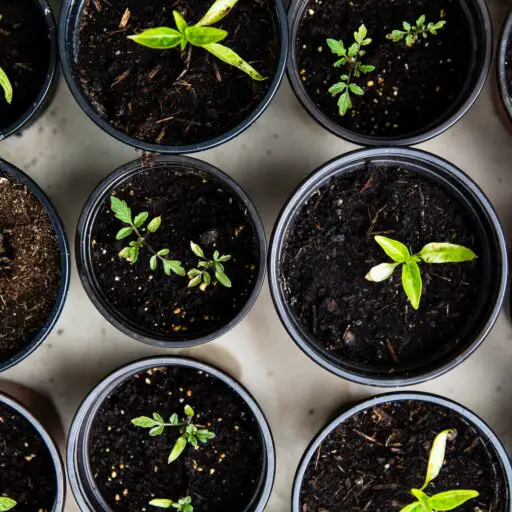Support our educational content for free when you purchase through links on our site. Learn more
Have you ever dreamed of growing your own vegetables while building a sense of community? 🌱 Community gardens can be magical places where neighbors unite to cultivate fresh produce and friendships. However, like any relationship, they come with their own set of challenges. Imagine this: you finally secure a plot in your neighborhood garden, only to find that disagreements over watering schedules and pest control techniques turn your peaceful gardening experience into a battlefield! 😬
In this article, we’re diving deep into the 10 hidden disadvantages of community gardens that you might not have considered. From conflicts among gardeners to accessibility issues, we’ll equip you with the knowledge to navigate these challenges effectively. So, whether you’re a seasoned gardener or just starting, stick around as we uncover the complexities of community gardening and help you make an informed decision!
Key Takeaways
- Conflicts and Disagreements: Different gardening styles can lead to tension among community members.
- Time Commitment: Regular maintenance is crucial, which may be challenging for those with busy schedules.
- Accessibility Issues: Some community gardens may not be easily accessible for everyone, limiting participation.
- Unequal Participation: Not everyone may contribute equally, leading to frustration among active members.
- Environmental Considerations: Community gardens require sustainable practices to mitigate environmental impacts.
Ready to get your hands dirty? Check out these essential gardening tools to kickstart your community gardening journey:
- Garden Trowels: Shop on Amazon
- Compost Bins: Shop on Amazon
- Raised Garden Bed Kits: Shop on Amazon
Join us as we explore these hidden disadvantages and arm yourself with the insights to thrive in your community gardening adventure! 🌼
Table of Contents
- Quick Tips and Facts About Community Gardens
- Understanding Community Gardens: A Brief History
- Top 10 Disadvantages of Community Gardens You Need to Know
- The Role of Community in Gardening: Benefits and Drawbacks
- Navigating Conflicts: Common Issues in Community Gardens
- Managing Expectations: What to Consider Before Joining a Community Garden
- Sustainability Challenges: Environmental Impacts of Community Gardens
- How to Overcome Common Obstacles in Community Gardening
- Conclusion
- Recommended Links
- FAQ
- Reference Links
Quick Tips and Facts About Community Gardens
🌱 Community gardens offer a fantastic way to connect with nature and your neighbors. But did you know they also boast surprising benefits like reducing food insecurity? Check out Are Community Gardens Really Effective? 10 Reasons Why They Thrive! 2024 for a deeper dive!
Here’s a quick rundown on community gardens:
- Definition: Shared plots where people come together to grow fresh produce and build relationships.
- Benefits: Access to fresh food, physical activity, social interaction, community beautification.
- Challenges: Potential for disagreements, need for organization and shared responsibility.
- Key to Success: Clear communication, established guidelines, and a shared passion for gardening! 🧑🏽🌾
Understanding Community Gardens: A Brief History

Community gardens aren’t a new fad; they have deep roots in our history. Let’s dig into their fascinating past:
Early Roots
- Ancient Times: Think communal plots in ancient Mesopotamia and Egypt – organized gardening was vital for survival!
- 19th Century Europe: “Allotment gardens” emerged, providing space for working-class families to grow food.
- North America: “Victory Gardens” during World Wars I and II boosted morale and food security.
Modern Revival
- 1970s Urban Renewal: Vacant lots transformed into green spaces, fostering community and addressing food deserts.
- Present Day: Community gardens flourish as hubs for sustainability, education, and social change.
Top 10 Disadvantages of Community Gardens You Need to Know
While community gardens sprout numerous benefits, it’s essential to be aware of potential drawbacks:
- Conflicts and Disagreements: Differing opinions on gardening practices, plot allocation, or shared resources can arise. 🤯
- Time Commitment: Gardening requires consistent effort. Juggling personal schedules with garden maintenance can be challenging. ⏰
- Limited Accessibility: Gardens may be inaccessible to individuals with mobility issues or those without convenient transportation. 🚶🏽♀️
- Theft or Vandalism: Sadly, not everyone respects shared spaces. Theft of produce or vandalism can occur. 😠
- Unequal Participation: Maintaining a shared garden relies on collective effort. Uneven workload distribution can lead to frustration.
- Water Management: Disagreements over water usage, especially during droughts, can create tension. 💧
- Pests and Diseases: Shared spaces can increase the risk of pests or diseases spreading between plots. 🐛
- Lack of Privacy: Some gardeners may prefer the solitude of a private garden over a shared space. 🤫
- Limited Growing Seasons: Depending on the climate, growing seasons may restrict the variety of plants that thrive. ❄️
- Waiting Lists: Popular community gardens often have waiting lists, making it challenging to secure a plot. 📋
The Role of Community in Gardening: Benefits and Drawbacks
The very essence of a community garden lies in its shared nature. Let’s explore the pros and cons:
Advantages of Shared Gardening:
- Social Connections: Bonding with neighbors over a shared passion for gardening fosters a sense of belonging. 😊
- Knowledge Sharing: Experienced gardeners can mentor beginners, creating a supportive learning environment. 📚
- Resource Pooling: Sharing tools, seeds, or resources lightens the financial burden and promotes sustainability. 🤝
- Community Building: Gardens act as social hubs, bringing people together from diverse backgrounds. 🏘️
Challenges of Community Dynamics:
- Communication Breakdowns: Misunderstandings or lack of clear communication can lead to conflicts. 🗣️
- Decision-Making: Reaching a consensus on garden rules, plot allocation, or plant choices can be complex.
- Personality Clashes: Differing personalities or gardening styles can sometimes clash.
Navigating Conflicts: Common Issues in Community Gardens
Disagreements are a natural part of any shared space. Here’s how to address common community garden conflicts:
- Establish Clear Guidelines: Develop and communicate clear rules regarding plot allocation, water usage, and shared responsibilities. Check out our Community Garden Policies category for helpful resources!
- Open Communication: Encourage open dialogue and active listening to understand different perspectives. 👂
- Conflict Resolution: Designate a mediator or committee to address disputes fairly and respectfully.
- Shared Responsibility: Emphasize the importance of shared responsibility for garden maintenance and decision-making.
Managing Expectations: What to Consider Before Joining a Community Garden
Before grabbing your gardening gloves, consider these factors:
- Time Commitment: Realistically assess the time you can dedicate to gardening and shared responsibilities.
- Personal Preferences: Are you comfortable sharing gardening space and resources, or do you prefer more autonomy?
- Garden Rules: Familiarize yourself with the garden’s rules, guidelines, and expectations for participation.
- Communication Style: Consider the communication channels and how decisions are made within the garden community.
Sustainability Challenges: Environmental Impacts of Community Gardens
While community gardens promote sustainability, they’re not without environmental considerations:
- Water Usage: Implementing water-wise gardening practices and utilizing rainwater harvesting systems are crucial. 🌧️
- Pest Management: Encourage organic pest control methods to minimize chemical use and protect beneficial insects. 🐞
- Soil Health: Promote composting, cover cropping, and crop rotation to maintain soil fertility and prevent erosion. 🌱
- Waste Reduction: Implement composting systems for garden waste and discourage the use of single-use plastics. ♻️
How to Overcome Common Obstacles in Community Gardening
Every garden faces challenges. Here are some proactive solutions:
- Foster a Strong Community: Organize social events, potlucks, or workshops to build camaraderie and a sense of shared ownership. Explore our Community Garden Events category for inspiration!
- Provide Educational Resources: Offer workshops on organic gardening, composting, or conflict resolution to empower gardeners. Our Gardening for Beginners section is a great starting point!
- Seek External Support: Collaborate with local organizations or universities for gardening expertise, resources, or funding opportunities.
- Celebrate Successes: Acknowledge and celebrate achievements to boost morale and foster a positive gardening experience. 🎉
Conclusion

In summary, community gardens are vibrant spaces that offer a plethora of benefits, from fresh produce to social connections. However, they come with their share of challenges, such as potential conflicts, time commitments, and issues with accessibility. The key takeaway? Community gardens can be a rewarding experience if you’re prepared for both the joys and the hurdles. By fostering open communication, establishing clear guidelines, and embracing the spirit of collaboration, you can cultivate not just plants, but also relationships and community spirit. 🌼
So, if you’re considering joining a community garden, weigh the pros and cons carefully. The shared joy of gardening can be immensely fulfilling, but it’s essential to be aware of the potential pitfalls. Happy gardening! 🌿
Recommended Links
-
Gardening Books:
- The Garden Primer by Barbara Damrosch: Shop on Amazon
- All New Square Foot Gardening by Mel Bartholomew: Shop on Amazon
- The Vegetable Gardener’s Bible by Edward C. Smith: Shop on Amazon
-
Community Gardening Tools:
- Garden Trowel: Shop on Amazon
- Compost Bin: Shop on Amazon
- Raised Garden Bed Kits: Shop on Amazon
FAQ

What is a disadvantage when a community grows?
Disadvantages of a growing community garden can include conflicts among members, increased competition for resources, and the potential for miscommunication. As the community expands, differing opinions on gardening practices, plot allocation, and shared responsibilities may arise. It’s essential to establish clear communication channels and guidelines to mitigate these issues.
What are the challenges to know when creating a community garden?
Challenges include obtaining land approval, securing funding, and managing diverse opinions among participants. Starting a community garden often requires navigating local regulations, building a committee, and creating a sustainable funding model. It’s crucial to engage the community early on and foster a sense of shared ownership to address these challenges effectively.
What are the cons of having a garden?
Cons of having a garden can include time commitments, maintenance challenges, and potential conflicts among community members. Gardening requires regular attention, which can be difficult to manage alongside other responsibilities. Additionally, disagreements over gardening practices or resource allocation can lead to tension within the community.
Read more about “10 Ways Community Gardens Are Boosting Local Economies … 🌱”
Are community gardens a good idea?
Yes, community gardens are generally a good idea! They promote social interaction, provide access to fresh produce, and enhance community aesthetics. However, it’s important to recognize and address the potential challenges to ensure a positive experience for all participants. Engaging in open communication and establishing clear guidelines can help foster a thriving community garden.
What should I consider before joining a community garden?
Consider your time commitment, personal gardening preferences, and the garden’s rules. Assess how much time you can realistically dedicate to gardening and whether you’re comfortable sharing space and resources. Familiarizing yourself with the garden’s guidelines and understanding how decisions are made will also help you align your expectations.
Read more about “Are Community Gardens Free? 10 Things You Need to Know … 🌱”
How can I help make my community garden successful?
To make your community garden successful, actively participate, communicate openly, and foster a sense of community. Attend meetings, volunteer for tasks, and share your gardening knowledge with others. Building strong relationships with fellow gardeners will enhance the overall experience and contribute to the garden’s success.
Reference Links
- Community Gardening: Benefits and Challenges
- 5 Challenges of a Community Garden
- Community Gardening Policies
- Gardening for Beginners
- Benefits of Community Gardens
By exploring the resources above, you can equip yourself with the knowledge needed to navigate the world of community gardening successfully! 🌻



